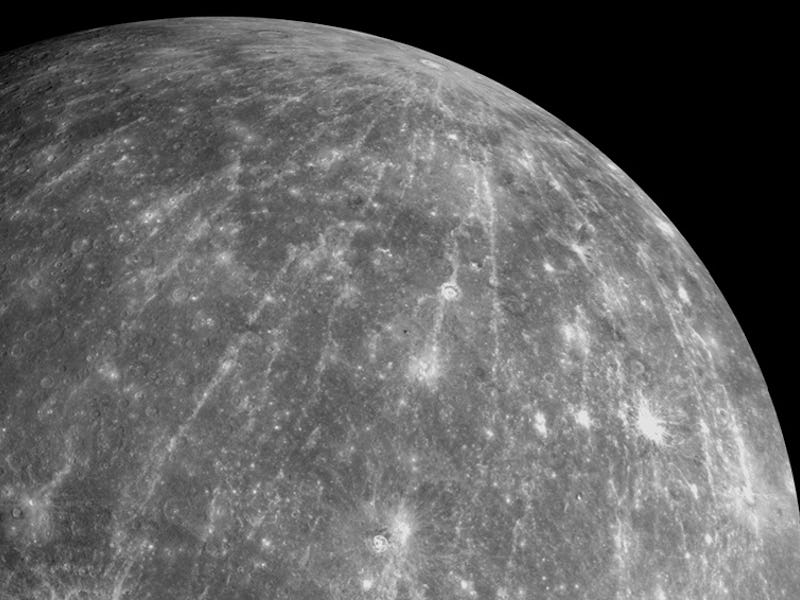You need to see Mercury at its highest on Wednesday night
The planet reaches its longest western elongation, where it will become visible in the night sky.

CELESTIAL OBJECTS COME AND GO FROM OUR VIEW IN THE NIGHT SKY, as they fling by or orbit around the Sun. Whether it be the full moon or a meteor shower or just the best night to see Mars, we're here to direct your eyes skyward and tell you to look up and appreciate the wonders of space from Earth.
This week, we're asking you to marvel at the beauty of the planet Mercury as it reaches its longest elongation in the west on Wednesday, July 22 shortly after sunset, and will be visible to sky gazers through the night.
Mercury is the closest planet to the Sun, and its solar proximity makes it difficult to spot the smallest planet in the Solar System as it becomes obscured by the light of our common host star.
However, on Wednesday night, Mercury will reach its longest elongation, or its furthest position away from the Sun, therefore becoming at its highest point of visibility to us Earthlings.
Mercury swings from the east to the west of the Sun three times a year, and the greatest elongation of the planet takes place 22 days before and after Mercury and Earth are on the same side of the Sun. On July 22, Mercury will reach the greatest elongation to the west, at 20 degrees west of the Sun, according to Astronomy.com.
Mercury will appear at its highest visibility on Wednesday night, shining under the faint light of the Moon.
The planet's elongation happens to coincide with the new Moon, a point during the lunar phase where the celestial satellite is at its faintest in the night sky, thereby allowing other objects to shine in the twilight.
The planet visible in the sky shortly after sunrise if you look towards the northeastern horizon. Mercury can be seen with the naked eye, but a pair of binoculars might also be handy if you want to catch the planet glimmer in the twilight.
If you live in a crowded city like New York, it is best to get as high up as possible in order to minimize light pollution therefore going on a balcony or rooftop is highly recommended.
You also want to block out any light coming from screens of electronic devices, or flashlights and allow your eyes to get accustomed to the darkness for around 30 minutes before you look up.
After it hits its greatest elongation, Mercury's visibility will continue to improve until it peaks on Saturday, July 25. The planet will appear in the constellation Gemini in the northern hemisphere.
Mercury was at its maximum elongation from the Sun on March 24, where it was 27.8 degrees west of the Sun. That's the furthest away from the Sun for the year 2020, and the planet was visible during the morning sky before sunrise.